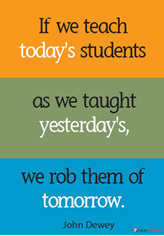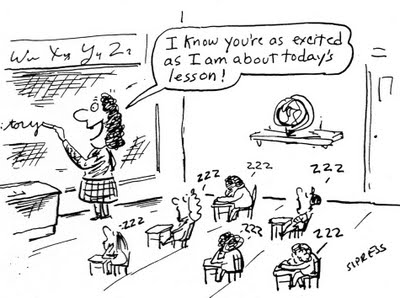Wow! It’s hard to believe that I will soon be well into the fourth week of my practicum. The past three weeks have flown by! I began by teaching math and science lessons and was nervous every time I was about to teach a lesson. Not only was it overwhelming that I was being observed, but I seemed to have very little confidence in myself. On paper, my lesson plans looked very hands-on but in practicality, I felt that I was creating a very teacher-led environment. During instruction, if students had questions, I would begin to doubt my teaching skills and stretch out the instruction portion of my lesson to explain a concept in more detail or using more examples. This would leave less time for hands-on activities and student engagement.
 However, in my second week, I had a lot of knowledge about my class and where they are academically. This was the week where I really learned the importance of flexibility and adaptability! I also began to teach French and created many fun games and activities, and found ways to incorporate student interests into my lessons. Seeing the students so engaged and excited motivated me to find ways to make subjects, such as math, just as fun. I began using iClickers and songs to help remember concepts. The first time I told the students that I was going to play a math song, they groaned and told me they’re too old for songs! I told them that they’re not too old for this one because even I have been singing it ever since I heard it. As soon as I played it, they began moving to the music and for the next few days, we would jokingly break out in song and dance. They then began to blame me because it was always stuck in their head!
However, in my second week, I had a lot of knowledge about my class and where they are academically. This was the week where I really learned the importance of flexibility and adaptability! I also began to teach French and created many fun games and activities, and found ways to incorporate student interests into my lessons. Seeing the students so engaged and excited motivated me to find ways to make subjects, such as math, just as fun. I began using iClickers and songs to help remember concepts. The first time I told the students that I was going to play a math song, they groaned and told me they’re too old for songs! I told them that they’re not too old for this one because even I have been singing it ever since I heard it. As soon as I played it, they began moving to the music and for the next few days, we would jokingly break out in song and dance. They then began to blame me because it was always stuck in their head!
 This past week has been just as fun. The students are learning about forces and motion and we have watched videos, played tug-of-war, and conducted experiments to test how different factors affect force. I have noticed that these hands-on activities keep all of the students, especially the quieter ones, engaged and having fun. During lessons, students work individually but they also work in pairs or larger groups. I have found that groups of 3-4 work very well in my class but it is crucial that I create the groups beforehand as it allows for me to ensure the groups are balanced in terms of their personalities and abilities. It is also important to change the groups and mix the students up. The first time that I created groups of 4, the students worked extremely well together so I decided to use the same groups for an activity the following week because I was so happy with their teamwork and collaboration. However, many times during recess and lunch, students would approach me and ask me to put them in groups with their friends. Now they know that when they show progress while working with their friends, it is possible that they may be in a group together in the near future.
This past week has been just as fun. The students are learning about forces and motion and we have watched videos, played tug-of-war, and conducted experiments to test how different factors affect force. I have noticed that these hands-on activities keep all of the students, especially the quieter ones, engaged and having fun. During lessons, students work individually but they also work in pairs or larger groups. I have found that groups of 3-4 work very well in my class but it is crucial that I create the groups beforehand as it allows for me to ensure the groups are balanced in terms of their personalities and abilities. It is also important to change the groups and mix the students up. The first time that I created groups of 4, the students worked extremely well together so I decided to use the same groups for an activity the following week because I was so happy with their teamwork and collaboration. However, many times during recess and lunch, students would approach me and ask me to put them in groups with their friends. Now they know that when they show progress while working with their friends, it is possible that they may be in a group together in the near future.
Using a stern voice and disciplining students has been the most difficult part for me. There are times when I do have to talk to students and let them know they are misbehaving or being disrespectful but overall, creating a safe environment and establishing strong relationships with the students has been my greatest accomplishment. My inquiry question is focussed on student engagement and I am happy to say that I have found ways to increase participation during whole group discussions as well as in small groups. There are some students who, at the beginning of my practicum, were somewhat reluctant to participate in activities but as of my third week, I have had every student raise their hand to contribute, which is a great feeling.

 Students want to:
Students want to:








